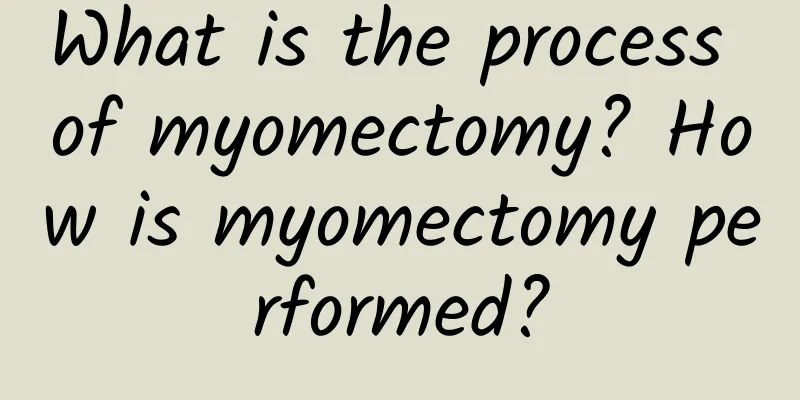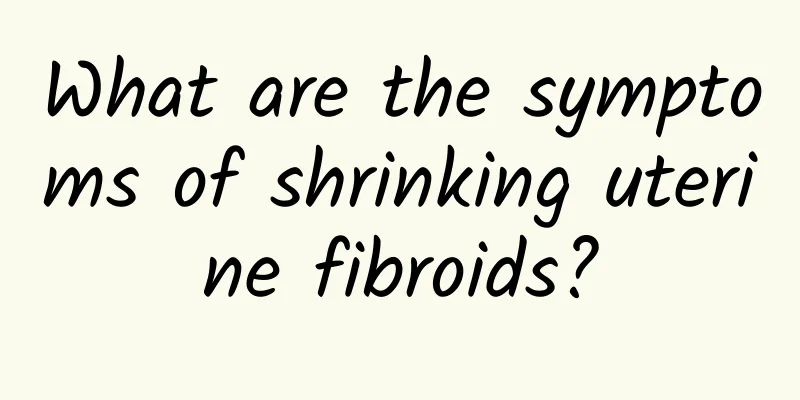What is the process of myomectomy? How is myomectomy performed?

|
[anaesthetization] 1. Continuous epidural block anesthesia. 2. General anesthesia with endotracheal intubation. [Preoperative preparation] Preoperative cervical smear, diagnostic curettage, and exclusion of cervical and uterine malignancies. [Surgical steps and technical points] 1. Incisions: midline incision in the lower abdomen or transverse incision above the pubic symphysis. Cervical isthmus ligation of uterine blood vessels Figure 2 2. Understand the location, size and number of uterine fibroids to determine the uterine incision. 3. Blocking the blood supply to the uterus Before removing the uterine body fibroids, make a small incision in the avascular area of the left and right broad ligaments of the uterine canyon, pass a rubber tourniquet through it, tie up the uterine movement and veins, and temporarily block the blood supply (Figure 1). If the operation time is long, relax the tourniquet for 1 minute every 10 to 15 minutes. Inject a contractant into the myometrium to reduce bleeding during the operation. Separate the fibroids and process the fibroid base 4. Removal of intramural fibroids: In the area with fewer blood vessels on the surface of the fibroid, longitudinal, fusiform or arc-shaped incisions are made according to the size of the fibroid (Figure 2), deep into the fibroid capsule, and blunt separation is performed along the surface of the capsule (Figure 3). When there are many basal blood vessels, the tumor can be clamped and removed (Figure 4), and the stump can be sutured (Figure 5). Use absorbable suture "8" words or continuous suture of 1~2 layers of the muscle layer (Figure 6). Be careful to avoid dead space when suturing. Intermittent or continuous mattress suture of the serosa layer (Figure 7). For multiple fibroids, multiple fibroids should be removed from one incision as much as possible. For fibroids close to the uterine horns, the incision should be as far away from the uterine horns as possible to prevent postoperative scars from affecting the patency of the fallopian tubes. Medicine All Online Suture the muscular layer 5. Resection of subserosal myomas This type of myoma often has a pedicle, and the tumor pedicle can be clamped close to the uterine wall to remove the myoma (Figure 8). When the tumor pedicle is wide, a fusiform incision can be made at the base (Figure 9) to remove the uterine tumor pedicle and superficial muscle layer. Stitching slurry base 6. Submucosal myoma resection If the myoma obviously protrudes into the uterine cavity, the tumor needs to be removed by entering the uterine cavity. When suturing the myometrium, the mucosal layer should be avoided to prevent the endometrium from implanting into the myometrium and artificially causing endometriosis. Submucosal myoma with pedicles can be removed through the vagina. In life, we must pay attention to our health, especially some female friends who drink alcohol for a long time and do not pay attention to sleep time, which will cause great harm to their bodies. I introduce hysteromyomectomy and hope it will be of some help to patients and friends. |
<<: What are the procedures for myomectomy? How is myomectomy performed?
>>: The dangers of laparoscopic myomectomy Will laparoscopic myomectomy cause uterine rupture?
Recommend
What should I do if my vulva itches and my leucorrhea is dreg-like and my waist hurts?
What should I do if my vulva itches and my leucor...
What to eat during pregnancy to prevent miscarriage
What can you eat during pregnancy to prevent misc...
What are the ways to relieve dysmenorrhea?
Almost every woman wants to live a beautiful and ...
How to check for irregular menstruation
In recent years, irregular menstruation has becom...
The most famous hospital for hyperprolactinemia
How to choose a hospital for the treatment of hyp...
Three common causes of uterine fibroids and postoperative care for uterine fibroids
Uterine fibroids are one of the most common benig...
Detailed explanation of the cost of threatened abortion
Conceiving a child is not an easy thing, but many...
Drinking tea before effective weight loss exercise can improve fat metabolism
The mermaid line and vest line trend is popular, ...
Boost your metabolism, these 8 foods will help you lose weight faster! Soy milk and broccoli are on the list
If you want to lose weight, besides exercise, die...
Can chronic cervicitis in women be completely cured? Three effective treatments for chronic cervicitis
The treatment of chronic cervicitis is relatively...
Analysis of the early symptoms of pelvic inflammatory disease in women
Pelvic inflammatory disease is a relatively stubb...
Middle-aged men are prone to gain weight: 3 rules for exercise and diet
Most men like to eat big amounts of meat and fish...
What are the harmful manifestations of pelvic inflammatory disease?
The high incidence of pelvic inflammatory disease...
What are the misunderstandings in the treatment of vulvar leukoplakia
Vulvar leukoplakia is common in female patients. ...
Will vulvar itching get worse after pregnancy?
Will vulvar itching get worse after pregnancy? 1....









